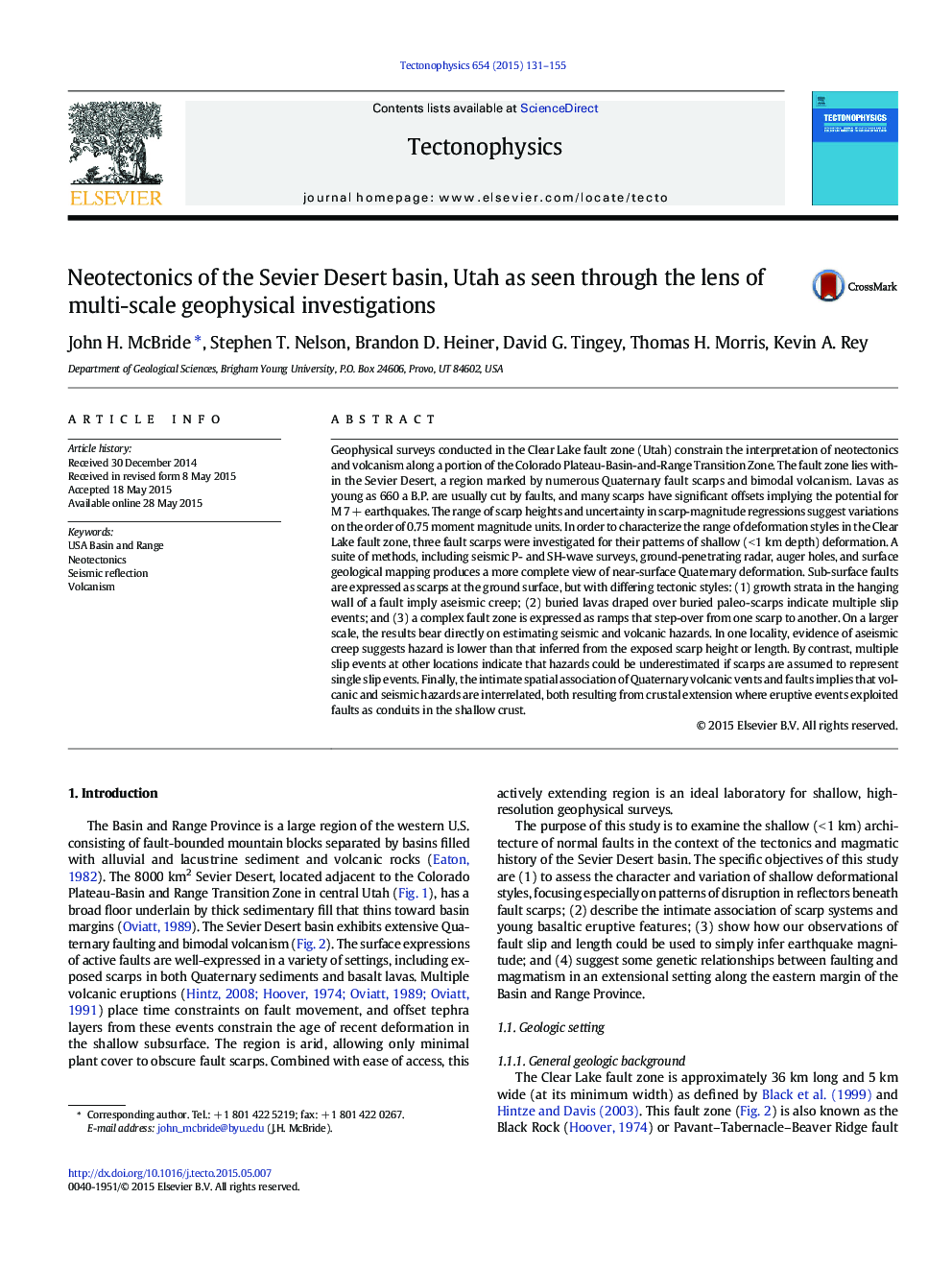| کد مقاله | کد نشریه | سال انتشار | مقاله انگلیسی | نسخه تمام متن |
|---|---|---|---|---|
| 6433661 | 1636741 | 2015 | 25 صفحه PDF | دانلود رایگان |

- High-resolution geophysics constrains tectonics of eastern Basin and Range.
- Faulting mechanisms vary from aseismic creep to discrete slip events.
- Recent bimodal volcanism, crustal extension, and shallow faulting are interrelated.
- Eruptive events apparently exploited faults as conduits in the shallow crust.
Geophysical surveys conducted in the Clear Lake fault zone (Utah) constrain the interpretation of neotectonics and volcanism along a portion of the Colorado Plateau-Basin-and-Range Transition Zone. The fault zone lies within the Sevier Desert, a region marked by numerous Quaternary fault scarps and bimodal volcanism. Lavas as young as 660 a B.P. are usually cut by faults, and many scarps have significant offsets implying the potential for M 7 + earthquakes. The range of scarp heights and uncertainty in scarp-magnitude regressions suggest variations on the order of 0.75 moment magnitude units. In order to characterize the range of deformation styles in the Clear Lake fault zone, three fault scarps were investigated for their patterns of shallow (< 1 km depth) deformation. A suite of methods, including seismic P- and SH-wave surveys, ground-penetrating radar, auger holes, and surface geological mapping produces a more complete view of near-surface Quaternary deformation. Sub-surface faults are expressed as scarps at the ground surface, but with differing tectonic styles: (1) growth strata in the hanging wall of a fault imply aseismic creep; (2) buried lavas draped over buried paleo-scarps indicate multiple slip events; and (3) a complex fault zone is expressed as ramps that step-over from one scarp to another. On a larger scale, the results bear directly on estimating seismic and volcanic hazards. In one locality, evidence of aseismic creep suggests hazard is lower than that inferred from the exposed scarp height or length. By contrast, multiple slip events at other locations indicate that hazards could be underestimated if scarps are assumed to represent single slip events. Finally, the intimate spatial association of Quaternary volcanic vents and faults implies that volcanic and seismic hazards are interrelated, both resulting from crustal extension where eruptive events exploited faults as conduits in the shallow crust.
Journal: Tectonophysics - Volume 654, 18 July 2015, Pages 131-155